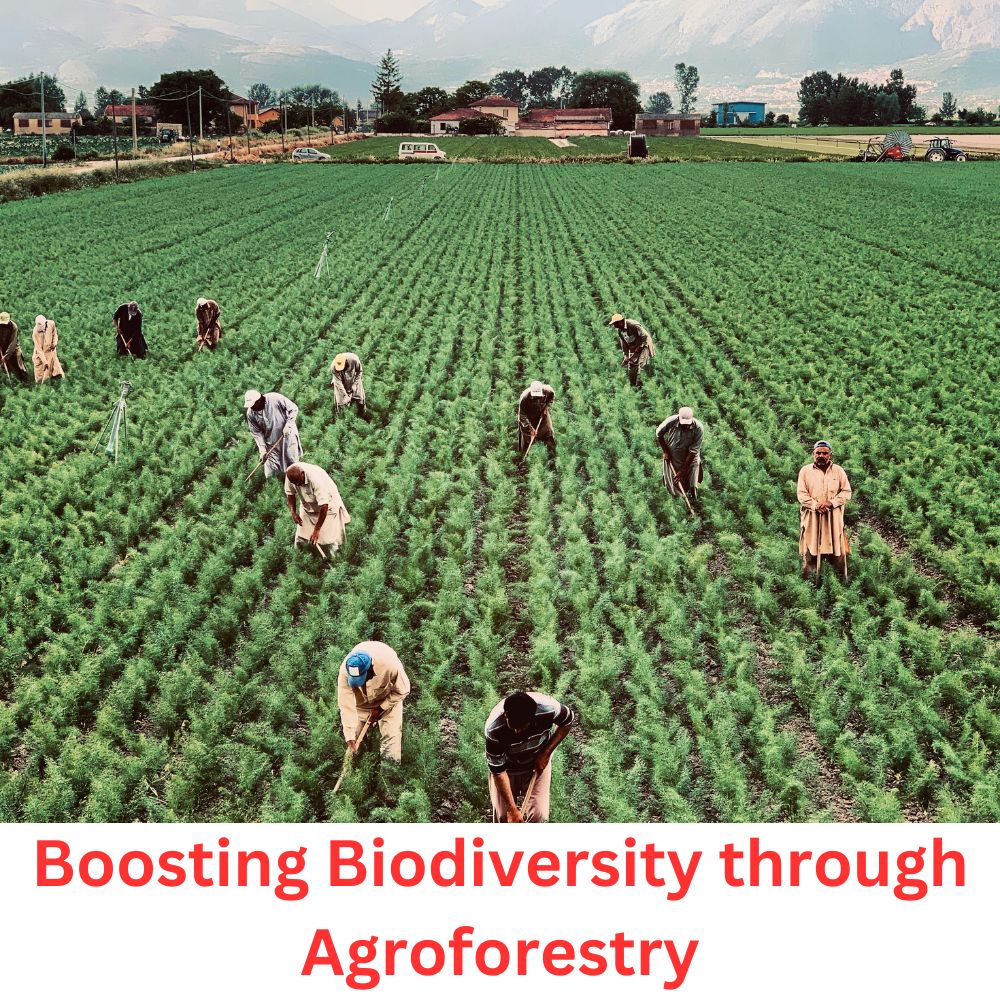Exploring Nature’s Synergy
In the heart of our rapidly changing world, lies a solution as old as the earth itself: agroforestry. This ancient practice, melding agriculture with forestry, is not just a technique for sustainable farming; it’s a beacon of hope for biodiversity conservation.
What is Agroforestry?
Agroforestry is the deliberate combination of trees and bushes into harvest and animal cultivating frameworks. These mind boggling frameworks. when managed well, can provide a multitude of ecological, economic, and social benefits. They range from simple combinations, like planting fruit trees in pastures, to more complex arrangements involving multiple layers of vegetation.
The Biodiversity Bonanza
The true magic of agroforestry lies in its capacity to enhance biodiversity. Trees act as natural habitats for a variety of species – birds, insects, and microorganisms, creating a thriving ecosystem where agricultural lands once stood barren. This increase in biodiversity isn’t just good for the environment; it’s beneficial for the crops as well. A diverse ecosystem can aid in pest control, pollination, and even improve soil health, leading to better crop yields.
A Carbon Sink
In an era where carbon footprint is a global concern, agroforestry shines bright. Trees are normal carbon sinks, retaining CO2 from the climate. By integrating them into farming, agroforestry systems can sequester significant amounts of carbon, contributing to climate change mitigation.
Water Wise
Agroforestry frameworks assume a vital part in water the executives. Trees can improve water infiltration into the soil, reducing runoff and erosion. Their roots can also draw up nutrients from deeper soil layers, making them available to other plants.
Economic Empowerment
From an economic standpoint, agroforestry offers diversified income sources. Farmers can harvest fruits, nuts, timber, and other tree products, providing financial stability and resilience against market fluctuations.
Challenges and Opportunities
Despite its advantages, agroforestry faces challenges. It requires a shift in traditional farming practices and knowledge, which can be a barrier for many farmers. However, with proper support and education, these hurdles can be overcome, paving the way for a more sustainable and biodiversity-rich future.
The Path Forward
As we look towards a sustainable future, embracing the arboreal advantage is more important than ever. Agroforestry is not just about planting trees; it’s about changing perspectives, and recognizing that in nature’s synergy lies the key to a healthier planet. By supporting agroforestry, we can take a significant step towards a more biodiverse, sustainable, and resilient world.
Cultivating Change: Agroforestry’s Potential in Mitigating Climate Challenges
Rooted Solutions for a Warming World
In the face of escalating climate challenges, agroforestry emerges as a beacon of hope and innovation. This practice, which intertwines agriculture with forestry, is more than just a farming technique; it’s a powerful tool in the battle against climate change.
Understanding Agroforestry
Agroforestry is the strategic combination of trees and shrubs with crops or livestock. These integrated systems can take various forms, such as alley cropping, silvopasture, or forest farming. They are designed not just to coexist but to benefit one another and the environment.
Climate Change Combatant
The role of agroforestry in mitigating climate change is multifaceted:
Carbon Sequestration: Trees are natural carbon absorbers. Integrating them into agricultural lands significantly increases the carbon storage capacity of these areas, reducing the amount of CO2 in the atmosphere.
Soil Health and Resilience: Agroforestry systems enhance soil structure and fertility. They reduce soil erosion, increase water retention, and improve nutrient cycling, making the land more resilient to extreme weather conditions.
Biodiversity Preservation: By introducing a variety of trees and shrubs, agroforestry creates habitats for diverse flora and fauna, bolstering local ecosystems and aiding in the preservation of biodiversity.
Economic and Social Benefits
Agroforestry not only addresses environmental concerns but also offers economic and social benefits:
Diversified Income Sources: Farmers practicing agroforestry can benefit from multiple streams of income, including the sale of fruits, nuts, timber, and non-timber forest products.
Food Security: By producing a variety of food products, agroforestry systems can enhance local food security and nutrition.
Community Resilience: These systems can foster stronger, more resilient rural communities by providing sustainable livelihoods and strengthening local economies.
Overcoming Challenges
Transitioning to agroforestry involves overcoming certain barriers, such as the need for education and training, access to resources, and changes in land management practices. However, with supportive policies and community engagement, these challenges can be addressed effectively.
A Call to Action
As we confront the realities of climate change, agroforestry offers a tangible, hopeful pathway. It’s a call to action for farmers, policymakers, and communities to collaborate in nurturing these sustainable systems. By cultivating change through agroforestry, we can make significant strides in our journey towards a more resilient and climate-smart world.
